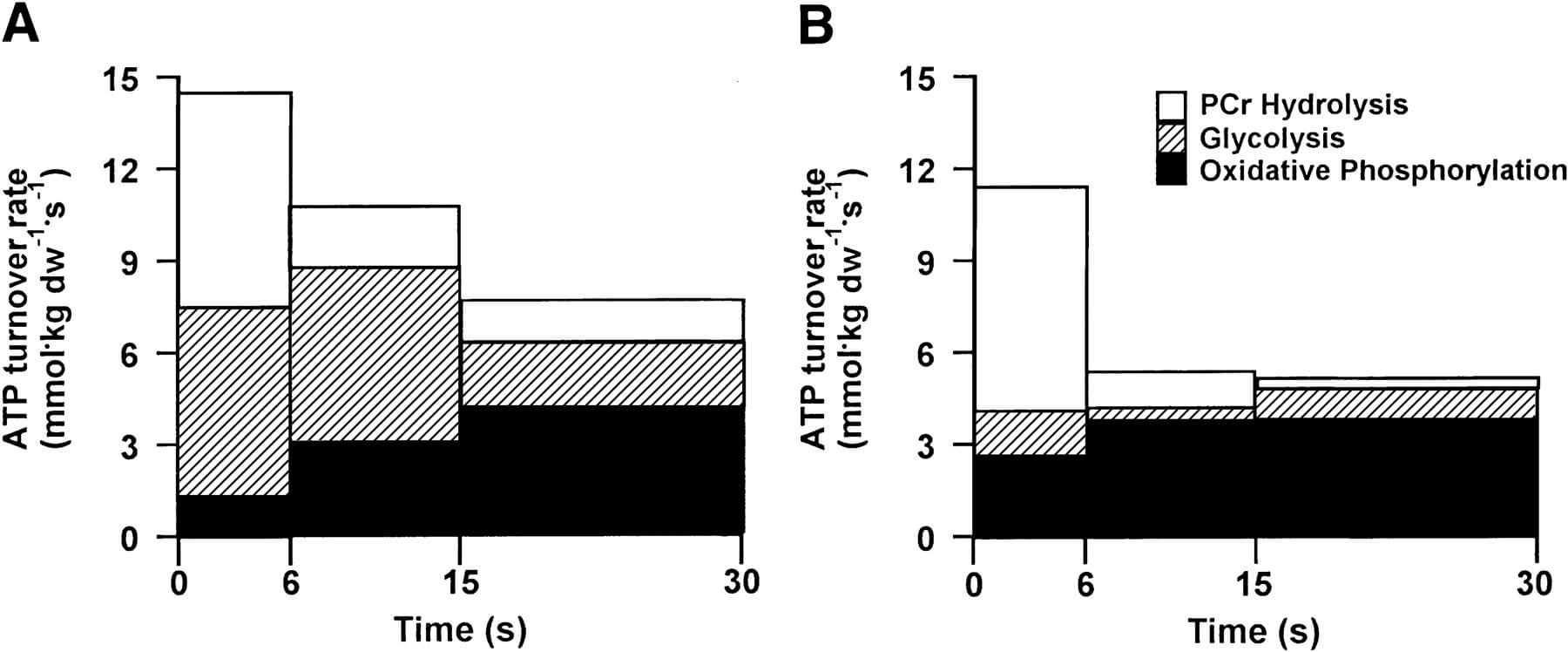But something strange has happened. Your MetCon workouts, the ones that leave you gasping for air and half dead on the floor. MetCon workouts are a staple of most CrossFit programs, and arguably what most people think of when they think of why CrossFit has stagnated. Maybe even regressed. You were told that you “needed a bigger engine” to start progressing again. So you’ve tried everything: lifting more to get stronger, doing more power work to get faster, even doing more “metabolic conditioning” work. None of it has seemed to help. You start out during MetCons and Hero workouts strong but find yourself “gassing out” early and unable to maintain power output as the MetCon goes on.
Photo via: Runar Eilertsen
What’s going on Here?
You’ve probably neglected the one area of fitness that would actually help your performance – your aerobic system. In my experience, many of the best CrossFitters have a very average aerobic system compared to their strength and power capabilities. This happens because the CrossFit community tends to focus on building the aerobic system through MetCon workouts, essentially high intensity interval training, and not dedicated aerobic work. While this will improve the “conditioning” of beginners and those with poor aerobic systems/fitness to begin with, eventually using strategies like the famed Tabata will stop working and may actually be what’s holding back your performance.
Energy Systems 101
The human body uses the compound adenosine triphosphate (ATP) for cellular metabolism. Basically, anything a cell needs to do, it needs ATP for the energy to do it. The body produces ATP through three different pathways: Keep in mind that all three systems are actively producing energy constantly. The contribution each one makes varies greatly based on the duration of an activity – not the intensity.
The Aerobic System
Your aerobic system is how the body produces the most energy (ATP) per cycle. During aerobic metabolism one molecule of glucose yields 36 ATP, compared to only 2 during anaerobic metabolism. The only drawback to aerobic metabolism is a slower process than the other two. While it takes some time to churn out those ATP, you can use the aerobic system literally for hours without fatiguing excessively or “gassing out”. The PC-ATP and Lactic Anaerobic systems are depleted quickly. When this happens fatigue sets in. You can observe this in marathon runners who perform continuously for hours primarily using the aerobic system, while sprinters are completely fatigued at the end of a 10 second 100 meter sprint where the ATP-PC system is dominant. The aerobic system has some other important qualities to remember:
It plays a role in the resynthesis of creatine phospate, which is used during the first 6-10 seconds of activity. It helps return you to a calm stat. Initiating the rest and digest system (parasympathetic tone) after intense efforts initiates the fight or flight system (sympathetic tone) .
This last point is important because stressful, high intensity, or fatiguing training initiates the fight or flight system. The aerobic system helps to manage the response to the stress. While we want the fight or flight system to start up, we do not want a larger response than is needed. An overly larger sympathetic response will only cause the heart rate to skyrocket and remain elevated. This will initiate the Lactic Anerobic system, fatiguing the athlete sooner than necessary by keeping the athlete in a (sympathetic) state and not allowing them to recover properly. A good aerobic system will help properly manage the response to a stressor (exercise).
Mitochondria: Where the ATP is Made
Often referred to as the powerhouse of the cell. This is where aerobic metabolism takes place. The more aerobic training you do, the more mitochondria you build. The more anaerobic (lactic) training you do, the more mitochondria you destroy. If you remember nothing else, please remember: Building more mitochondria is the key to producing more energy (ATP).
The Efficient Heart
With all this talk about creating energy with or without oxygen, we can’t forget the muscle that is responsible for getting that oxygen to the muscles and ultimately the cells. The heart is made of four chambers. Deoxygenated blood enter the right atrium, flows into the left ventricle, goes through the lungs to pick up oxygen molecules, re-enters in the left atrium, and is pumped out to the rest of the body with the left ventricle. When the hearts of athletes were compared, it was found that the left ventricles had substantive differences. While endurance training is known to create a larger and more elastic left ventricle, weight training or any high intensity anaerobic training of the sort is known to have the opposite effect. Anaerobic activities create a thickening of the left ventricle wall, which leads to a less elastic and smaller left ventricle. This means anaerobic athletes have a smaller ejection fraction, pumping much less blood per beat of the heart, compared to aerobic athletes.
Anaerobic Threshold
Everyone has reached that point where fatigue starts to rapidly accumulate. Your legs, lungs, and arms start to burn – and you’re really hating life. At this point, you’ve passed your anaerobic threshold: the point at which we can no longer clear the waste products (hydrogen ions) from ATP production. An acidic environment is created in the cells and fatigue starts to accumulate rapidly. Training in this area can be very valuable. There are enzymes, phoshofructokinase (PFK) and phosphorylase produced that will help you resist fatiguing when training here. It feel terrible while you’re doing it, but it’s also very physically and mentally draining. Thankfully, after 6-8 weeks you’ve maxed out your possible improvements. Keep in mind that while you’re doing this type of training you’re actively destroying mitochondria and limiting your overall ATP potential. The longer you train, the more you stress this system, and end up destroying even more mitochondria.
Repeated Sprint Ability
Most MetCon and Hero workouts are nothing more than a series of sprints with short rest periods. One of the most popular protocols is the Tabata. Essentially, you work very hard for 20 seconds and then rest for 10 seconds, repeating this process for 4 continuous minutes. While this is a misrepresentation of what the original Tabata study entailed, it’s what the Tabata has become. Framing this in the context of energy system training, it seems like it would be nothing more than 20 seconds of primarily Lactic Anaerobic training followed by a rest period. Because of this we should focus on training the Lactic (LA) system. However, the research on repeated sprint ability has shown us that this isn’t the case. Remember: all energy systems are interrelated and turned on constantly, only the contribution changes.
The first graph is sprint #1, the second is sprint #3 from this study Parolin,1999 Basically, the graph demonstrates that by the third sprint the majority of the energy was provided early in the sprint by the Pcr (PC-ATP) system (the white area), then later by the aerobic system (oxidative phosphorylation). The Lactic Anerobic (glycolytic) system was overwhelmed early on because of the accumulation of by-products of its own making, thus forcing it to limit it’s ATP production and contribution by sprint #3. Once the subject got to sprint 3 it was up to the aerobic system to, not only, resythesize PC for the CP-ATP system to start activity, but also provide almost all of the energy after 6 seconds, when the CP-ATP system had run dry. The contribution of the Lactic Anaerobic system was almost nonexistent.
What about Tabata?
The holy grail of justification for MetCon or High Intensity Interval Training is usually the Tababta study. However, this study has been misrepresented. The part everyone forgets is that the Tabata study was carried out on very highly conditioned, national level, speed skaters. They had already built a HUGE aerobic base. Basically, the Tabata study shows what they could accomplish, achieving a VO2 Max of 170% across all 8 intervals. Most people don’t have the ability to come close to that, not even once. The study didn’t tell you what they did beforehand to be able to accomplish that. Those test subjects (as we saw in the graph above) must have a giant “engine” (or aerobic system) to begin with or they would not be able to recover from such high intensities in so little time. Without a strong aerobic system, there is no way they would have been able to maintain that level of power output for 8 intervals. They simply wouldn’t have regenerated the creatine phospate and ATP needed as they fatigued. Their power output would also fall well below 170% of vo2max.
This is Why You’re “Gassing Out” During Fran
Besides the fact that it’s really hard, you’ve only been training your lactic anaerobic system. For the first few efforts, before your heart rate elevates and exceeds your lactate threshold, you’re able to produce power. But once you pass your lactate threshold and accumulate fatigue, your aerobic system isn’t kicking in enough to help you recover and maintain your power output. You are literally sprint #3 from the graph. Before you get into anaerobic training (LA) your ceiling is very low. You’re entering into anaerobic metabolism early and never getting out of it. The consequence is that you MUST slow down, lengthen rest periods, lower power output, or even stop all together. You’ve “gassed out”.
What to Do:
This doesn’t mean you need to start running 5 miles a day. You could, but nothing would turn me off of a training program faster. My personal favorite form of aerobic training is cardiac output training. This will help build both a larger left ventricle cavity in the heart, as well as mitochondria to produce ATP. I usually walk uphill on a treadmill with a weight vest. Some people use short sprint intervals where they stop at a heart rate of 140/ 150 and sprint again when it recovers to 120. Others use weight training circuits or kettlebell swings. The heart is a dumb muscle and only responds to the needs of the body. The type of exercise doesn’t matter. As long as it lasts for at least 30 minutes and the heart rate stays between 120-150bpm, you’re good to go. This heart rate covers most people, although it may be too high for some. The take-home is: staying below the lactate threshold keeps the heart rate low enough that you don’t enter into anaerobic metabolism. The left ventricle of the heart will fill with blood and stretch for a bigger ejection more so than speed up. The only rules you need to follow are:
Is Metabolic Conditioning or High Intensity Interval training Just a Waste of Time?
Not at all. It’s actually a great tool for fat loss. Those who are really strapped for time or who just love to really work hard, sweat, and be exhausted will love MetCons. It can also burn serious calories in a short period of time. These workouts DO improve the aerobic fitness of those who have an average or below average fitness level. So if you’ve been training for a while, that’s not you. If you’re already pretty fit but gas out early, then you need a bigger engine. This will only come through taking the time to build a more robust aerobic system. Featured photo credit: Runar Eilertsen via flickr.com

